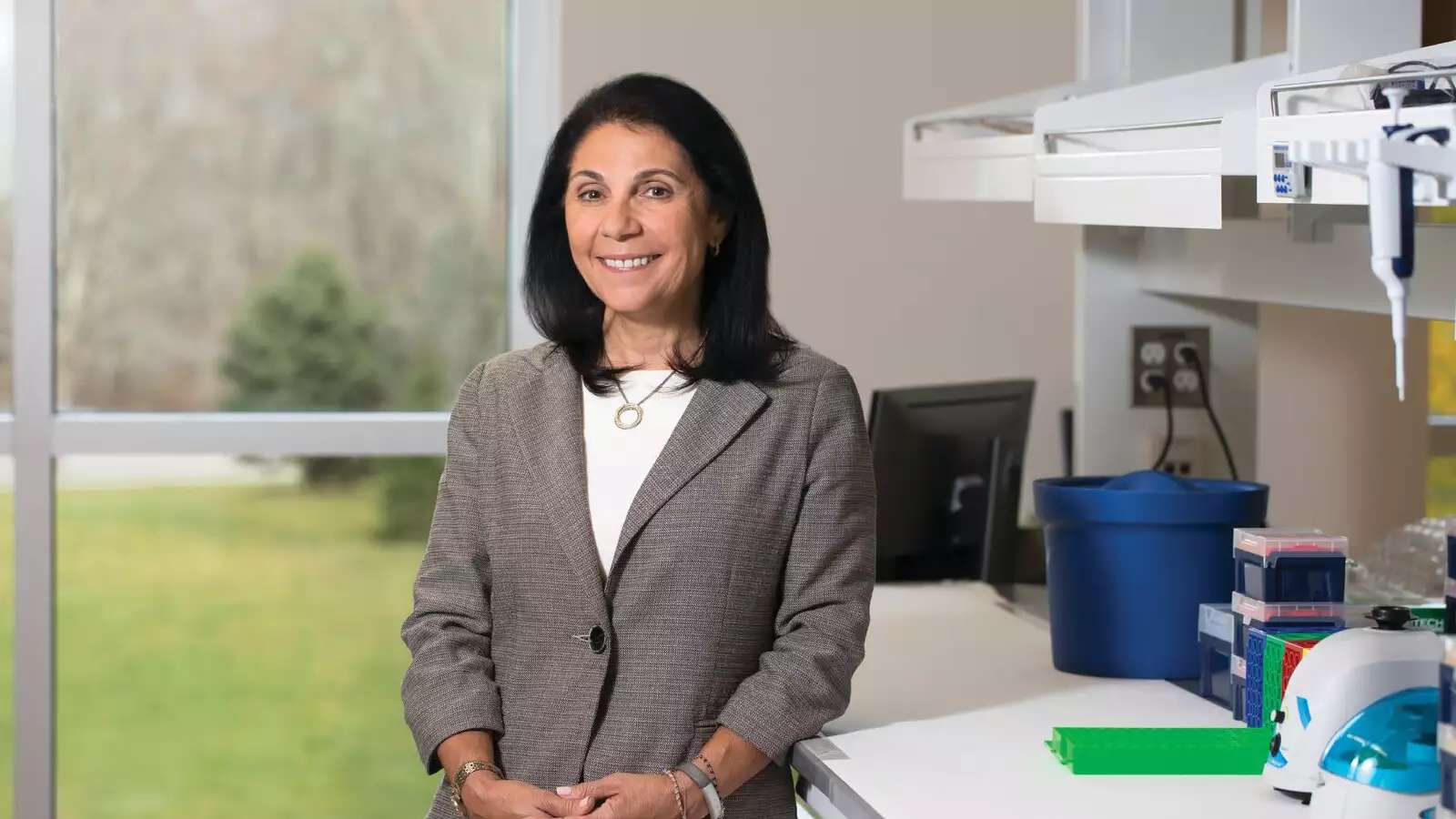
When Paula Grammas ’76 was a young scientist in the late 1980s, she proposed a radical idea in the field of neurodegenerative disease. At the time, most work on diseases such as Alzheimer’s was directed at exploring two well-known proteins that were present in the brains of those with the disease. Grammas, then an assistant professor at Wayne State University in Detroit, suggested instead that the brain’s blood vessels might play a crucial role. Her hypothesis was met with a resounding silence.
“I was all but ignored. They were like, ‘Go away, little girl.’ No one was interested in anything outside of the mainstream in the field,” she recalls.
Three decades later, Grammas’ theory is recognized as a key contribution and is being pursued by labs around the world. Last year, she was named the inaugural director of the George and Anne Ryan Institute for Neuroscience at the University of Rhode Island, a multidisciplinary research center focused on discovering and developing disease-modifying therapies for neurodegenerative disorders such as Alzheimer’s and Parkinson’s disease. She is actively exploring a new therapy that could—for the first time—slow the progression of Alzheimer’s in the brain.
Grammas has long carved her own path. The daughter of Greek immigrants, she grew up in Far Rockaway, Queens, in a neighborhood that was almost entirely Jewish. “I was already a bit of an outsider, but in a good way,” she says. “Having that experience of being different early on makes you more self-reliant.” After graduating from Barnard with a degree in biology and political science, she earned a master’s degree in experimental pathology at New York Medical College, working in a lab studying high blood pressure.
When her lab moved to Wayne State University, she moved with it, earning her PhD and helping develop a technique for isolating blood vessels. Her work on the brain got her thinking about Alzheimer’s, a disease in which nerve cells in the brain die.
“There are 400 miles of blood vessels in the brain,” says Grammas. “Maybe nerve cells die because the blood vessels that should provide a good environment for them don’t work properly.” Her mother was diagnosed with the neurological disease ALS and died in 1985, giving her new motivation to find a cure for diseases of the brain.
The dominant theory for the cause of Alzheimer’s has to do with two proteins, amyloid-ß and tau, which have been found in high amounts in the brains of those who suffer from the disease. Grammas doesn’t rule out the proteins’ role in some cases, but redirects attention to the role that blood vessels may play. Yet the dominant model has received the vast majority of Alzheimer’s funding. “It’s sucked all of the air out of the room,” says Grammas. “Meanwhile, we have yet to produce a drug that does anything to ultimately alter the course of the disease.”
In the 1990s, she continued to research her unorthodox hypothesis as a professor of pathology at the University of Oklahoma Health Sciences Center. A key moment came in 1999 when she published a study in The American Journal of Pathology showing that blood cells from a brain with Alzheimer’s secreted factors that killed healthy nerve cells. At the time, she felt close to a breakthrough, but there were so many different substances secreted by the cells it was impossible to isolate just one. As more studies backed up the role of blood pressure and cholesterol in brain health, however, the link between blood vessels and Alzheimer’s gradually gained acceptance.
After years of being ignored, Grammas is now seen as a leader in the field, says Jack de la Torre, a professor of psychology and neuropsychology at the University of Texas and a leading Alzheimer’s authority. “Paula has been at the cutting edge of Alzheimer’s research for decades. Her work provides an understanding of the factors that promote cognitive loss and provides a therapeutic strategy for halting the start of Alzheimer’s dementia.”
Like many female scientists, she suspects gender discrimination had something to do with the reluctance to take her ideas seriously. “I can’t say a job has ever been denied me, but people do not always appreciate a smart woman in science,” she says.
Grammas credits the supportive environment at Barnard with helping to give her the confidence to push back. “Barnard is all about female empowerment—on some subliminal level I think I imbibed that,” she says.
Grammas’ work has led her to believe that lifestyle changes that improve heart function, such as exercise and diet, may also reduce one’s risk of developing Alzheimer’s. After moving to Texas Tech University in 2004 to direct the Garrison Institute on Aging, she helped organize community outreach programs to educate people on the role that lifestyle adjustments can play in brain function—a link recognized by the Alzheimer’s Association.
At the University of Rhode Island, Grammas now leads a new center established with a gift by Tom Ryan, former CEO and president of CVS Health, that focuses on neurodegenerative diseases. The center conducts basic research with an emphasis on developing therapies to treat and cure disease.
In her own research, Grammas is studying how blood vessels are activated to release proteins and other substances that kill nerve cells, as a possible cause of Alzheimer’s. Grammas is experimenting with a class of drugs used to treat cancer patients that can dampen this activation process.
She demonstrated the effectiveness of the idea in animals in a 2014 article published in the Journal of Alzheimer’s Disease , and is now seeking funding for human clinical trials. As with her past cutting-edge ideas, her new theory hasn’t yet been accepted by the majority of the field. “We are still not quite mainstream,” she says. If the past is any indication, however, then it’s a good bet that her ideas soon will be. •
